-
Posts
7,997 -
Joined
-
Last visited
-
Days Won
2
Content Type
Profiles
Forums
Blogs
Gallery
Events
Store
Posts posted by Hauptmann
-
-

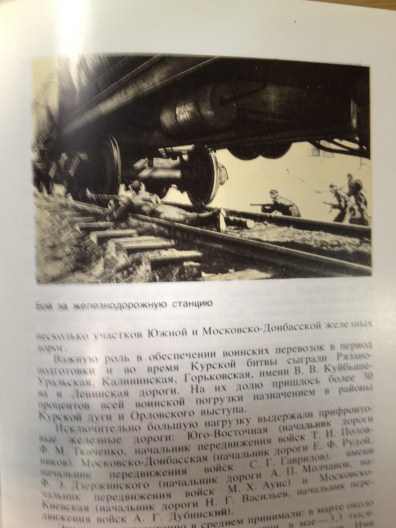
They look like terrific books but unless I can find a way to learn Russian fluently pdq and that at 50... I'm out of luck other than getting them to look at the pics.
Here's hoping some will eventually come out in English down the road.

Dan :cheers:
0 -
-
-
-
-
Nick, many thanks for the link. Sorry for my late reply. Got super busy with work upon my return and now I'm laid up, having taken a bad fall this past Friday night. Have a "high ankle sprain" which the doc says is as bad as a break. Four to six weeks recovery.
Very interesting site. I've also seen a few books on the subject... sadly none in English yet that I know of. Here's a couple that cought my eye. If I could find them cheap enough when I have $$'s I'd love to get them.
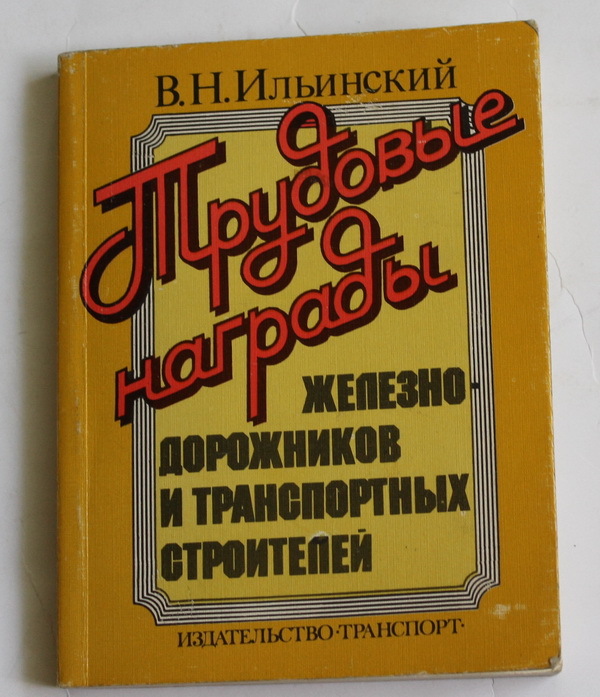 0
0 -
The academy badges are different... two different schools so can't see why he would not be entitled to wear them both. I wouldn't think that would be the case if both were the same badge.
Also, very similar academy badges were issued by several of the other Warsaw Pact countries... Hungary, Bulgaria, etc. I believe the Colonel has some foreign medals on his last row of awards but it's at such an angle that I can't make out what they are or from what countrie(s).
The Soviet Union also had a TON of these badges for various schools, universities and academies. Again if one earned two or more I can only imagine they could be worn, unless regs only permitted a set number... which may have been the case. That's something I don't know. If that was not the case I'd think it would also be up to the individual... I can only imagine that most would not want to clutter up their uniforms with say, five or ten such badges. They'd likely pick those from the highest school/university/academy and wear those as the most important/significant.
Just some thoughts.

Dan :cheers:
0 -
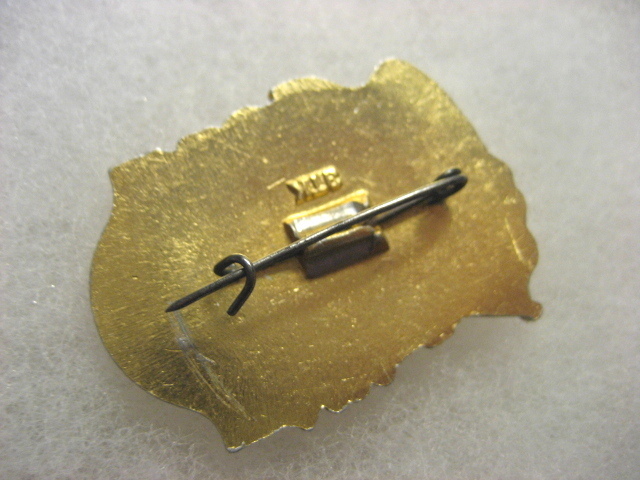
Dan :cheers:
0 -
-
What I'm assuming was the last type of the Excellence in Socialist Competition on the Railways. Really got tinny looking in the end but nice that the engine was applied as a separate piece which I like.
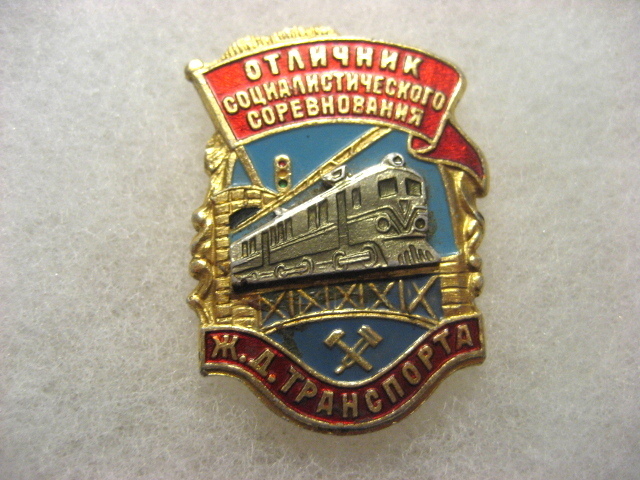 0
0 -
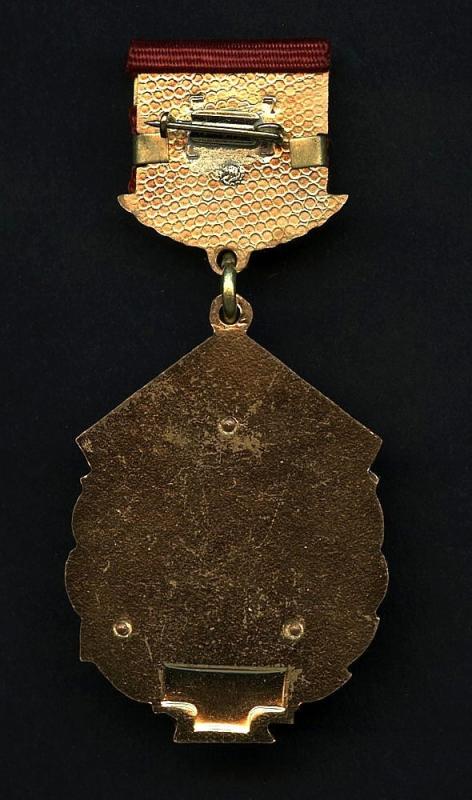
Needless to say, if ya'll would be willing to check any orphaned docs you have to see if any SN's match any of the awards I have I'd be most grateful as I'm always in the hopes of reuniting awards and their documents and most importantly their history.
Many thanks!

Dan :cheers:
0 -
No one in to these anymore? I'm hearing the crickets chirp!
Hoping someone shows up. I've been wondering... as far as these RR awards but also other non-military numbered awards... are there archives for these where one can possibly find info on the awardees, etc., as with military awards? I've never heard of same but keeping my fingers crossed. I know that the labor awards are not researcheable... rather suspect this is the case here too but until I know for sure I'll keep hoping.
I'm always keeping my eye out for award booklets in the hope of finding one to match an award I have. I know of the site where SN's can be entered for various awards in the hope of reuniting them with larger groups and docs... but again I don't know of any for awards like the RR or other SN'd awards as in the areas of agriculture, engineering, etc. If anyone knows of any or whether such archives exist and are or might some day be opened for research I'd love to know.
The double set of the Honored and the Shockworker badges arrived today and are even better than I could have imagined. I can't wait for the rest to arrive.. I was also quite surprised at one last present... the last one I realistically think I'll be able to add to the set other than any duplicates that turn up on what I already have. The 150th Anniversary Medal:
 0
0 -
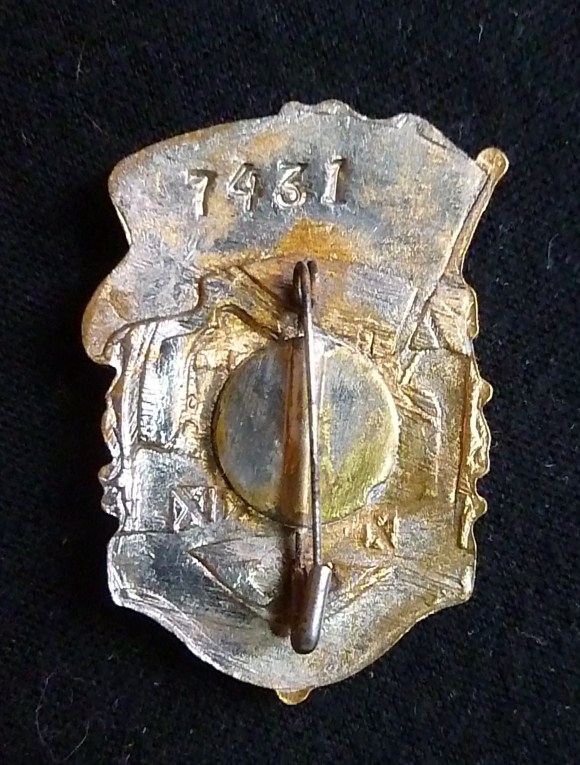
These have been a loooooong time coming but so happy to finally be able to add them to my Soviet RR collection.
As always comments are welcome. Need to get some activity going on this thread again so hoping this will give it a jump start.

Dan :cheers:
0 -
And this one... with a slightly lower number and IMHOP pretty close to mint condition:
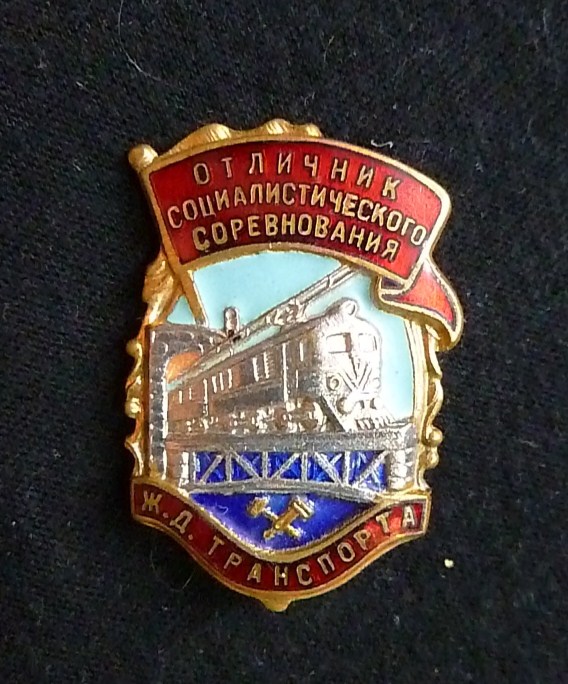 0
0 -
Now an Excellence in Socialist Competition on the Railways... first of two... what I believe is a fairly low number but I've not been able to find a ton of into on these. This one needs some TLC but I like it:

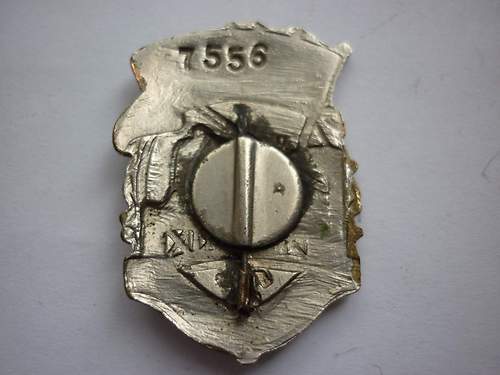 0
0 -
Another which I'm thinking is also WW2 but later than the above. Came with the Shockworker badge:
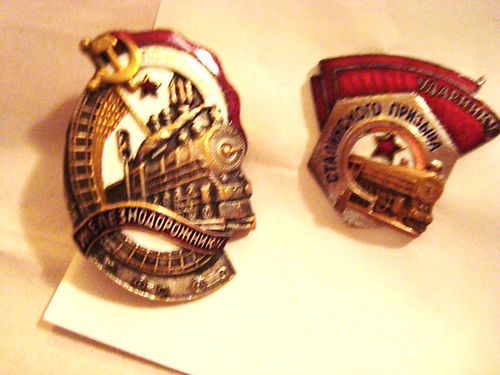
Nice as it includes the screwback protector... not sure if the first one has that or not:
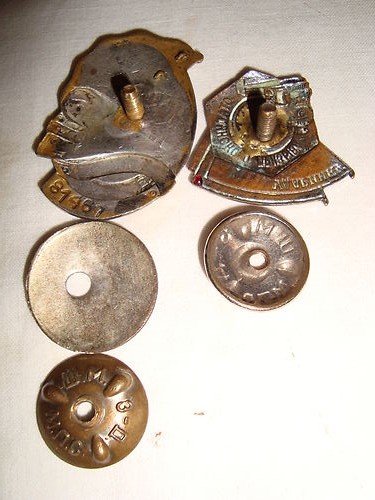 0
0 -
-
Received a few belated birthday presents and wanted to share. They're on the way so will redo some of the pics and repost once I have them in hand.
First, an Honored Railway Employee Badge... I believe WW2 period:

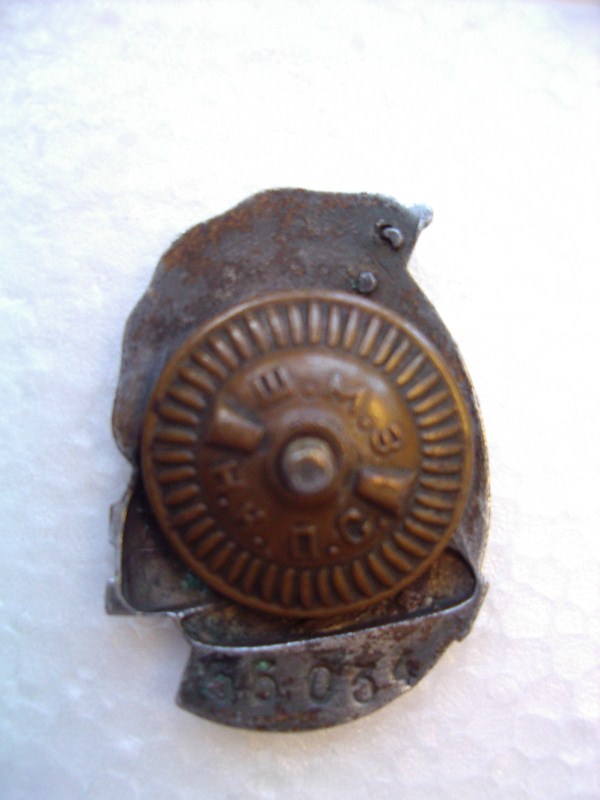 0
0 -
We try.

Keep in mind that so many variations would have likely been made over time that slight differences like the difference in the tail are to be expected. Here's a bit more... including pic of Fujita by his plane and closeup of Fujita:
http://en.wikipedia...._submarine_I-25
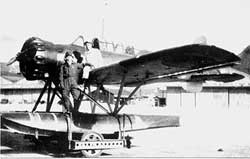

Also HIJMS Submarine I-25: Tabular Record of Movement
http://www.combinedfleet.com/I-25.htm
Other than this and the balloon bomb there was also the incident involving the I-17 shelling a refinery in Ellwood near Santa Barbara, Ca:
http://www.militarymuseum.org/Ellwood.html
Dan :cheers:
0 -

http://www.stelzried...ml/mshwma42.htm
From Out West Newspaper
July, 1990
World War II Air Raid in
Oregon Was a Real Bomb!
-----
When Jimmy Doolittle commanded his daring
World War II air raid on Tokyo, neither he
nor other American military brass could
have imagined the bizarre counter attack
by the Japanese five months later.
-----
Enraged at the invasion of their homeland, the Japanese devised a secret plan to ignite the forests of the American mainland with incendiary bombs. And even though few Americans know it today, the failed mission was actually carried out.
Chief Warrant Office and pilot Nubuo Fujita would be called upon to lead the invasion. In fact, it could be said Fujita was the invasion.
In Japan, on an otherwise routine day in 1942, Fujita was called into the office of Prince Takamatsu, Emperor Hirohito's brother and an important military officer. The Prince informed Fujita of a plan to bomb the American mainland. Fujita was elated at the thought. He envisioned something on the magnitude of Pearl Harbor. "Los Angeles or San Francisco?" he asked, eager to learn of his target. "Oregon," answered his superior. Then Fujita was told the details of an operation the Japanese military believed could burn up a large part of the Northwest and destroy the morale of the American people. So began a mission which would propel Fujita into the history books -- a mission so secret that it was a total surprise to American military intelligence. It was so secret, in fact, that it was a half-day after the attack before anyone knew there was an attack at all!
On August 15, 1942, Fujita boarded a 1950-ton Japanese submarine for the trip to the American shore. Stored on-board the small sub was a single-engine airplane which would transport him and his navigator Shoji Okuda on their daring raid. By early September, the ship had reached its planned position off the Oregon coast. Every morning for days thereafter, the periscope would be raised only to reveal weather too foul to fly in. Dejected, Fujita would retreat to his room to wait for the next day. Finally, on the morning of September 9, the weather cleared and the sea was calm. Fujita was told to get ready. Along with his regular gear, he packed a family treasure -- a Samurai sword that had been in his family for 400 years. If he was forced down, he could use it to end his life rather than be captured by the enemy.
His 'geta' float plane was assembled and then readied, and he and Okuda boarded. Moments later, the tiny aircraft and its two-man crew were catapulted into the skies and headed toward the Cape Blanco lighthouse on a southeasterly course into enemy territory. The secret mission to bomb Oregon was underway.
It was peaceful in Brookings, Oregon. Fishermen were slowly sailing out of port, and the citizens were sitting down for breakfast. The sound of a small plane flying overhead didn't alarm anyone. Little did the people of Brookings realize that they were in the midst of an air attack -- the first-ever manned aerial bombing of the American mainland.
Fujita and Okuda proceeded east past Brookings and prepared to drop their load -- two 160-pound incendiary bombs. An hour after leaving the sub, they were nearly in position.
Back in Japan, military leaders anxiously awaited word on the mission. Would the bombs explode and ignite the forest into flames as planned? Would the fire spread to the cities -- burning homes and factories and sending the American people into panic and depression? They could only hope -- and wait.
While they pondered from afar, Fujita was at 8,200 feet over a heavily wooded forest. He ordered Okuda to drop the bombs. Then they watched as they fell to earth. But they didn't wait around to see what happened. Instead they set a course to the ocean and the sanctuary of their sub. They landed the pontoon-equipped plane and it was soon disassembled and stored away on ship. Everything was going perfectly -- that is, until the Americans appeared. They had spotted the enemy sub from their airplane, and minutes later they were directly above and attacking with bombs! But, sadly for the Yanks, they were too late. The Japanese sub slipped below the ocean surface, and even though it was slightly damaged, it successfully hid on the bottom and eventually escaped.
About the same time, a little past noon, Mt. Emily fire lookout Howard Gardner radioed in a fire report. Then, on foot, he set out to find it. So did Keith Johnson from his lookout at Bear Wallow. At 4:20 p.m., they located the blaze -- a few small and easily-extinguished fires that involved only seven trees. But, more importantly, they determined that the fires were not caused by lightning as they had originally suspected, but by bombs from an enemy aircraft! Excited, they radioed in their finding. Within hours, the U.S. military, the FBI, and other government agencies were on the scene -- trying to piece together clues as to how an enemy plane could have invaded and then escaped American airspace without a trace. Fortunately, weather conditions were not favorable for a forest fire on September 9.
Johnson, an 18-year-old forestry student at the University of Nebraska, would be kept on by the Forest Service for three months for questioning, missing his fall semester.
Back on ship, Fujita, Okuda and the rest of the sub crew waited patiently off shore, preparing for another attack. It came 20 days later -- this time in a grassy area east of Port Orford. But unlike the previous attack, when one of the two bombs exploded, this time both fizzled. To this day, neither bomb has been located.
Their mission accomplished, Fujita and company sailed back to Japan. Okuda was later killed in action, but Fujita survived the war to become a successful businessman. In 1962, twenty years after the attack, he returned to Brookings as a guest of its citizens. To make amends for his attack, he presented the city with his cherished Samurai sword. "It is the finest of Samurai traditions to pledge peace and friendship by submitting the sword to a former enemy," he said through a translator. The sword was placed in the mayor's office, where it remains today.
This May, Fujita, 78, returned again to Brookings. He brought along his granddaughter. It would probably be his last chance to show her where he made history as the only flyer ever to bomb the United States mainland.
]Look, up in the Sky... It's a Bird... It's
a Plane... It's a Japanese Submariner!
-----
The Japanese Admiralty clung tenaciously to the desire to attack the continental U.S. Of course the responsibility to execute such a feat of daring fell to the Japanese submarine force. At the start of the war, 11 of the Japanese submarines in commission were outfitted with deck hangers to carry single-engine, catapult-launched, 'geta' float planes that were capable of flying 1.5 hours to target and back or 3 total hours of reconnaissance. These small craft had a top air speed of only about 115 miles per hour (185 km/hour). They were stored for transport in 12 separate pieces and assembled just prior to launch. Recovery took place when the aircraft returned to the mother ship, landed nearby on its floats, was disassembled and re-stowed. These aircraft were called 'geta' because of the resemblance of their floats to a common Japanese clog-like shoe of the same name.
While originally designed to assist the host submarine in long range reconnaissance missions for the fleet, a resourceful submariner eventually concluded that by attaching a few bombs to the aircraft, the 'geta' might be put to a more lethal use. This idea is attributed to Warrant Officer Nubuo Fujita, who was then stationed aboard the Japanese submarine I-25. Fujita’s original idea was to arm the 'geta' for use in assisting attacks upon U.S. surface ships in fleet actions - he believed that by doing this he could not only find the ships but attack them as well. When the Japanese Admiralty got wind of the idea, it had a grander mission in mind.
Briefed by no less a personage than Prince Takamatsu, the Emperor’s brother, Fujita was instructed to test his theory’s effectiveness on the American mainland itself! However daring this mission would be, it quickly became one of strategic convolution -- rather than a direct attack on one of the many targets of significance along the U.S. west coast, the orders given to Fujita were, incredulously, to bomb the forest approximately 75 miles north of the California border, in Oregon!
The reason for the Japanese Admiralty’s decision was recorded as "Rather than inflicting limited damage on industrial targets, since the northwestern U.S. is full of forests, we will start a blaze in the deep woods. The resulting forest fire will be very difficult to stop. Whole towns will be destroyed and it will create panic among the population."
After many months of training and fitting out the 'geta', the I-25 began its slow transit of the Pacific. It arrived off the coast of Oregon in the waning days of August, 1942. Ten days were spent on station by the anxious crew, with seas too high to launch the float plane. Finally, it calmed sufficiently to execute the mission. On September 9, 1942, Warrant Officer Fujita and his observer, Petty Officer Shoji Okuda, boarded their 'geta' and set off on a heading to inland Oregon.
Flying 50 miles inland undetected, Fujita and Okuda did, indeed, become the first and only enemy mission to successfully bomb the continental U.S. during WWII. They returned safely to the I-25 to report that "both bombs exploded perfectly and two large fires are spreading." However, what Japanese intelligence either did not know or failed to account for was that the target area in Oregon had been saturated with several weeks of recent rains. The fires were quickly put out with negligible damage to the forests and none to any population centers or industrial targets. The bombing was a closely kept secret in the U.S. and had virtually no effect on the American population.
0 -
No problem Chris... happy to help out. I definitely agree with you that the eagle looks American Indian.

Dan :cheers:
0 -
The one on the upper left seems to be Bavarian. The one on the upper right is probably either Soviet, Bulgarian or other Warsaw Pact for Motor Transport Troops. Here's a shot of a set in a riker with shoulder patch. The one you have is for the collar tabs.
http://www.angelfire.com/tx2/russianbear/displaysovietmotortran.html
Dan :cheers:
0 -
This is a shame, but after reading it through they said they are limited in the number of people who can attend... there can be a number of reasons for this. They said they've tried to limit it to surviving crew members and families of those crew members who gave their lives in service. But you would think that someone as involved in trying to get funding for this would have been invited straight off. In a perfect world... which sadly this is not.
I pray he'll get to go to at least one if not several of the other events that are planned. A very brave man!

Dan :cheers:
0 -
http://news.yahoo.com/navy-marks-battle-midways-70th-anniversary-073947792.html
Navy marks Battle of Midway's 70th anniversary
By AUDREY McAVOY | Associated Press – Tue, Jun 5, 2012

In this photo taken May 31, 2012, retired Rear Adm. Mac Showers, the last surviving member of the intelligence team that deciphered Japanese messages in the lead up to the Battle of Midway, is seen in Pearl Harbor, Hawaii. Showers and Navy officials are observing the 70th anniversary of the battle that changed the course of World War II on Monday, June 4, 2012. (AP Photo/Audrey McAvoy)
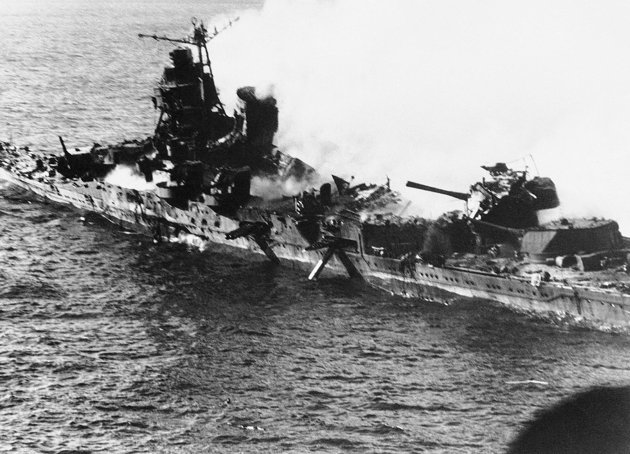
FILE - In this June 1942 file photo, a Mogami class Japanese cruiser is the flaming target of carrier-based U.S. naval aircraft in the historic battle of Midway which raged for three days in June 1942. On Monday, June 4, 2012, the Navy marks the 70th anniversary of a battle that turned the tide of World War II. (AP Photo, file)
PEARL HARBOR, Hawaii (AP) — Six months after the devastating attack on Pearl Harbor, Japan sent four aircraft carriers to the tiny Pacific atoll of Midway to draw out and destroy what remained of the U.S. Pacific Fleet.
But this time the U.S. knew about Japan's plans. U.S. cryptologists had cracked Japanese communications codes, giving Fleet Commander Adm. Chester Nimitz notice of where Japan would strike, the day and time of the attack, and what ships the enemy would bring to the fight.
The U.S. was badly outnumbered and its pilots less experienced than Japan's. Even so, it sank four Japanese aircraft carriers the first day of the three-day battle and put Japan on the defensive, greatly diminishing its ability to project air power as it had in the attack on Hawaii.
On Monday, current Pacific Fleet commander, Adm. Cecil Haney and other officials flew 1,300 miles northwest from Oahu to Midway to mark the 70th anniversary of the pivotal battle that changed the course of the Pacific war.
Midway is now a National Wildlife Refuge hosting more than one million seabirds. Navy photos of the ceremony show an honor guard standing at attention next to a field of ground-nesting Laysan albatross and other seabirds.
"After the battle of Midway we always maintained the initiative and for the remaining three years of the war, the Japanese reacted to us," Vice Adm. Michael Rogers, commander of the U.S. Fleet Cyber Command, told a crowd gathered outside Nimitz's old office at Pearl Harbor on Friday to commemorate the role naval intelligence played in the events of June 4-7, 1942.
"It all started really in May of 1942 with station Hypo (the Combat Intelligence Unit at Pearl Harbor) and the work of some great people working together to try to understand what were the Japanese thinking, what were they going to do," Rogers said Friday.
Intelligence wasn't the only reason for U.S. victory.
The brave heroics by dive bomber pilots, Japanese mistakes and luck all played a role. But Nimitz himself observed that the code-breaking was critical to the outcome, said retired Rear Adm. Mac Showers, the last surviving member of the intelligence team that deciphered Japanese messages.
"His statement a few days later was 'had it not been for the excellent intelligence that was provided, we would have read about the capture of Midway in the morning newspaper,'" said Showers said in an interview.
Japan's vessels outnumbered U.S. ships 4-to-1, Japan's aviators had more experience, and its Zero fighter planes could easily outmaneuver U.S. aircraft.
But Japan, unlike the U.S., had little knowledge of what its enemy was doing.
Japanese commanders believed a U.S. task force was far away in the Solomon Islands. Then, as June 4 neared and Nimitz prepared his troops, Japanese commanders failed to recognize signs of increased military activity around Hawaii as an indication the U.S. had uncovered their plans to attack Midway, the site of a small U.S. base.
The U.S. lost one carrier, 145 planes and 307 men. Japan lost four aircraft carriers, a heavy cruiser, 291 planes and 4,800 men, according to the U.S. Navy and to an account by former Japanese naval officers in "Midway: The Battle That Doomed Japan, the Japanese Navy's Story."
The defeat was so overwhelming that the Japanese navy kept the details a closely guarded secret and most Japanese never heard of the battle until after the war.
Nimitz got his intelligence from Showers and a few dozen others relentlessly analyzing Japanese code in the basement of a Pearl Harbor administrative building.
Japanese messages were written using 45,000 five-digit numbers representing phrases and words.
The cryptographers had to figure out what the numbers said without the aid of computers.
"In order to read the messages, we had to recover the meaning of each one of those code groups. The main story of our work was recovering code group meanings one-by-painful-one," Showers said.
At the time of the Dec. 7, 1941, attack on Pearl Harbor, they understood a small fraction of the messages. By May 1942, they could make educated guesses.
A key breakthrough came when they determined Japan was using the letters "AF" to refer to Midway.
Showers said Cmdr. Joseph Rochefort, the team's leader, and Nimitz were confident the letters referred to the atoll. But Adm. Ernest King, the Navy's top commander, wanted to be sure before he allowed Nimitz to send the precious few U.S. aircraft carriers out to battle.
So Nimitz had the patrol base at Midway send a message to Oahu saying the island's distillation plant was down, and it urgently needed fresh water. Soon after, both an intelligence team in Australia and Rochefort's unit picked up a Japanese message saying "AF" had a water shortage.
Showers was an ensign in the office, having just joined the Navy. He analyzed code deciphered by cryptographers, plotted ships on maps of the Pacific, and filed information.
Now 92 and living in Arlington, Va., the Iowa City, Iowa, native went on to a career in intelligence. He served on Nimitz's staff on Guam toward the end of the war, and returned later to Pearl Harbor for stints leading the Pacific Fleet's intelligence effort. After the Navy, he worked for the Central Intelligence Agency.
Showers said commanders weren't always as open to using intelligence to plan their course of attack the way Nimitz was. Some were suspicious of it.
But Midway changed that.
"It used to be a lot of people thought intelligence was something mysterious and they didn't believe in it and they didn't have to pay attention to it. Admiral Nimitz was fortunately what we call intelligence-friendly," Showers said.
0




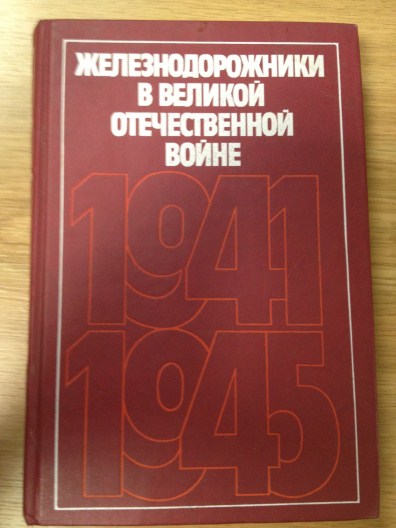




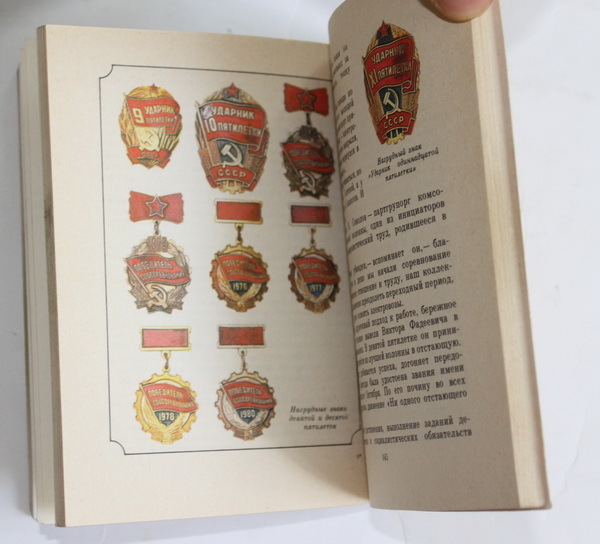
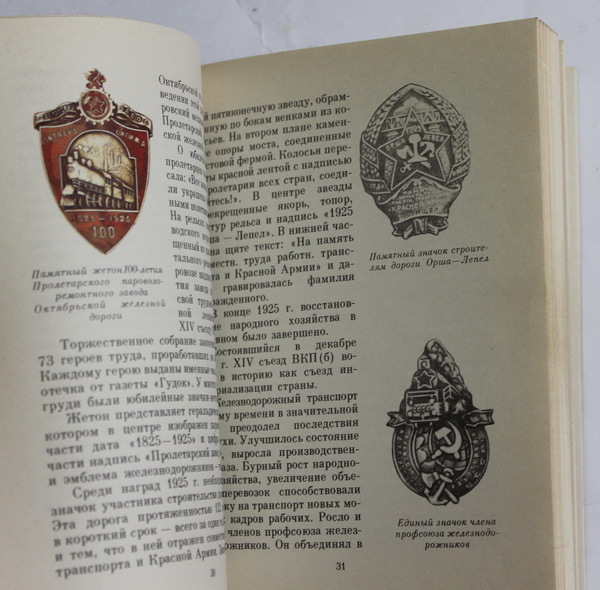
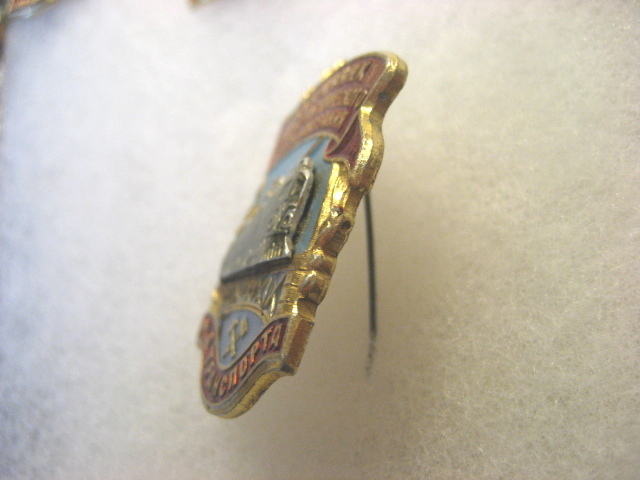
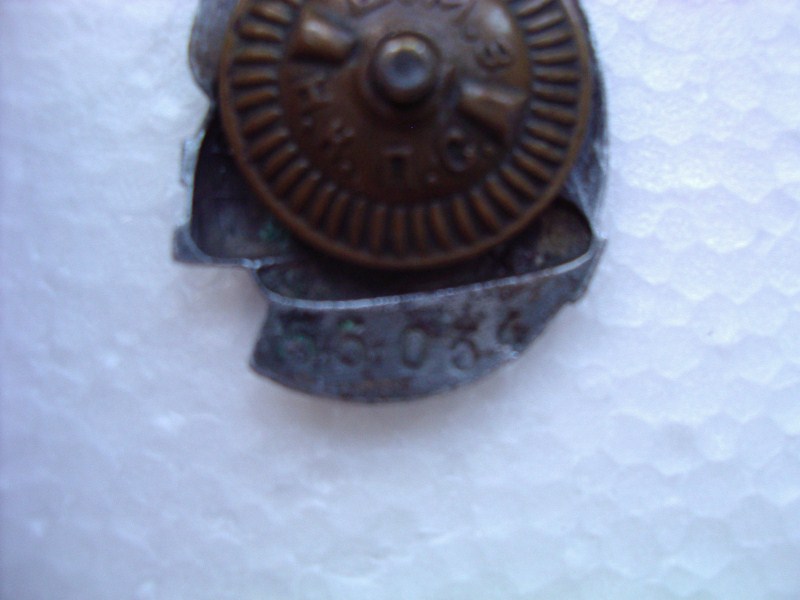
OGPW2 Lieutenant David Fedorovich Kandavadze
in Russia: Soviet Orders, Medals & Decorations
Posted